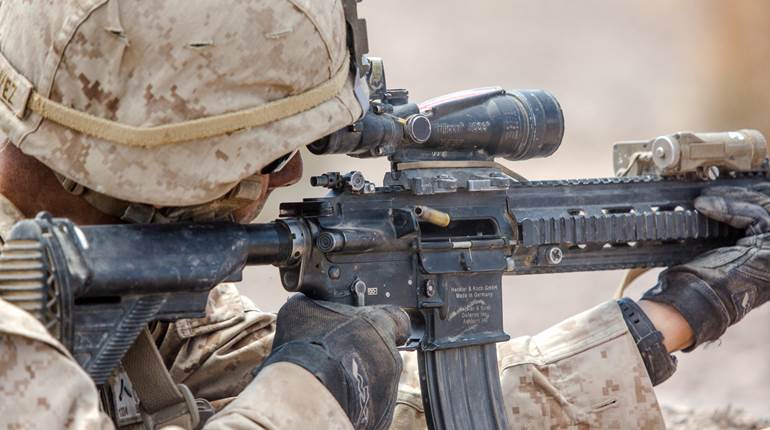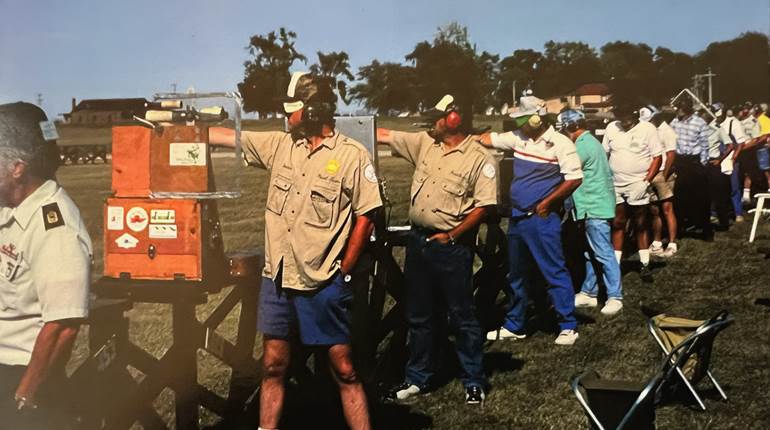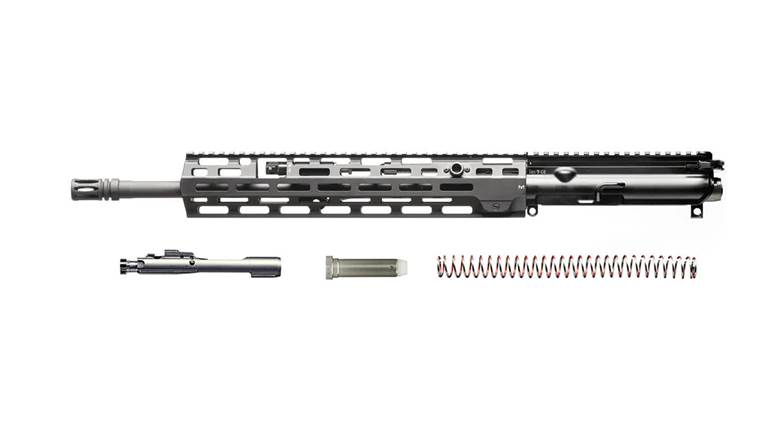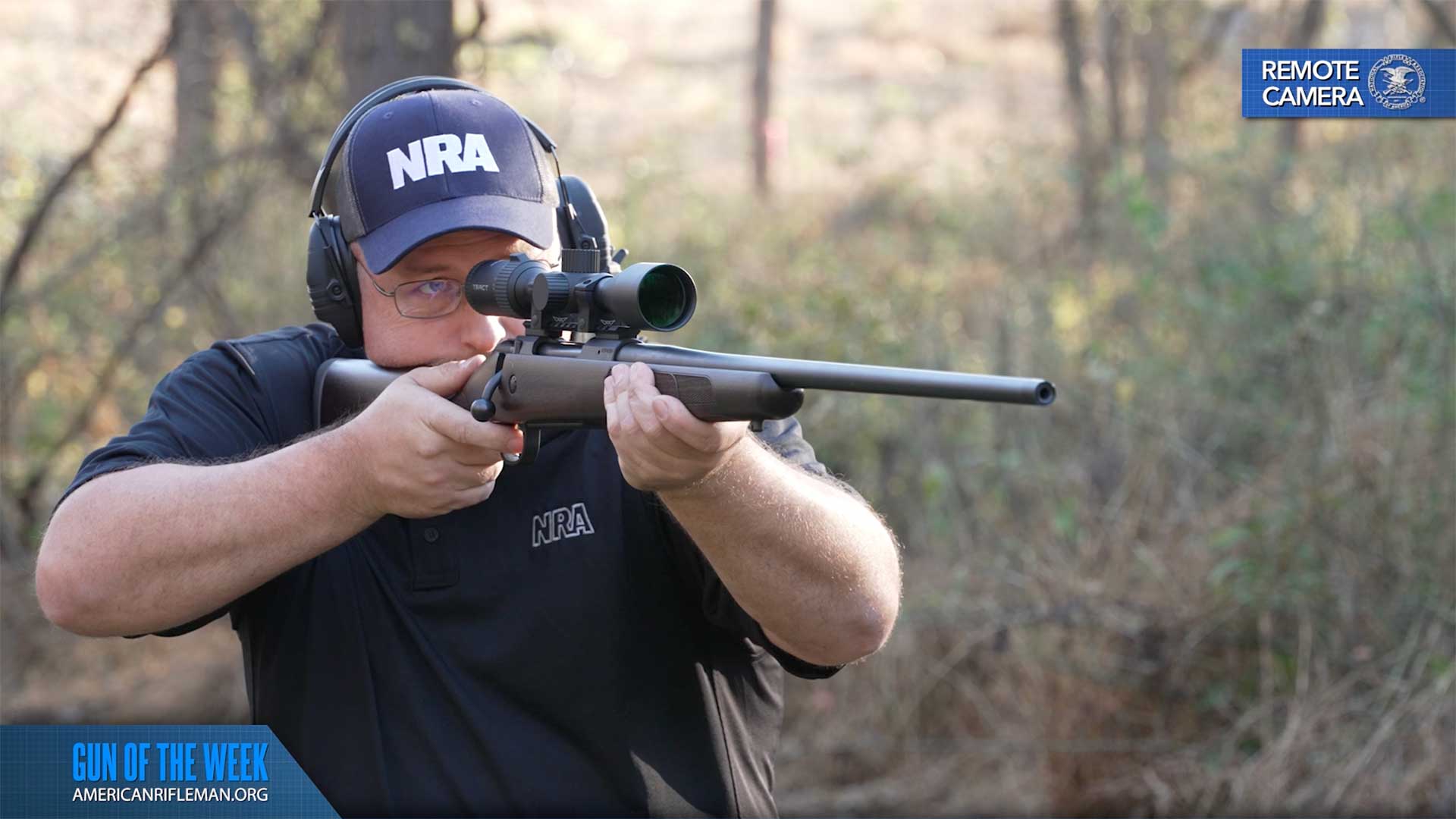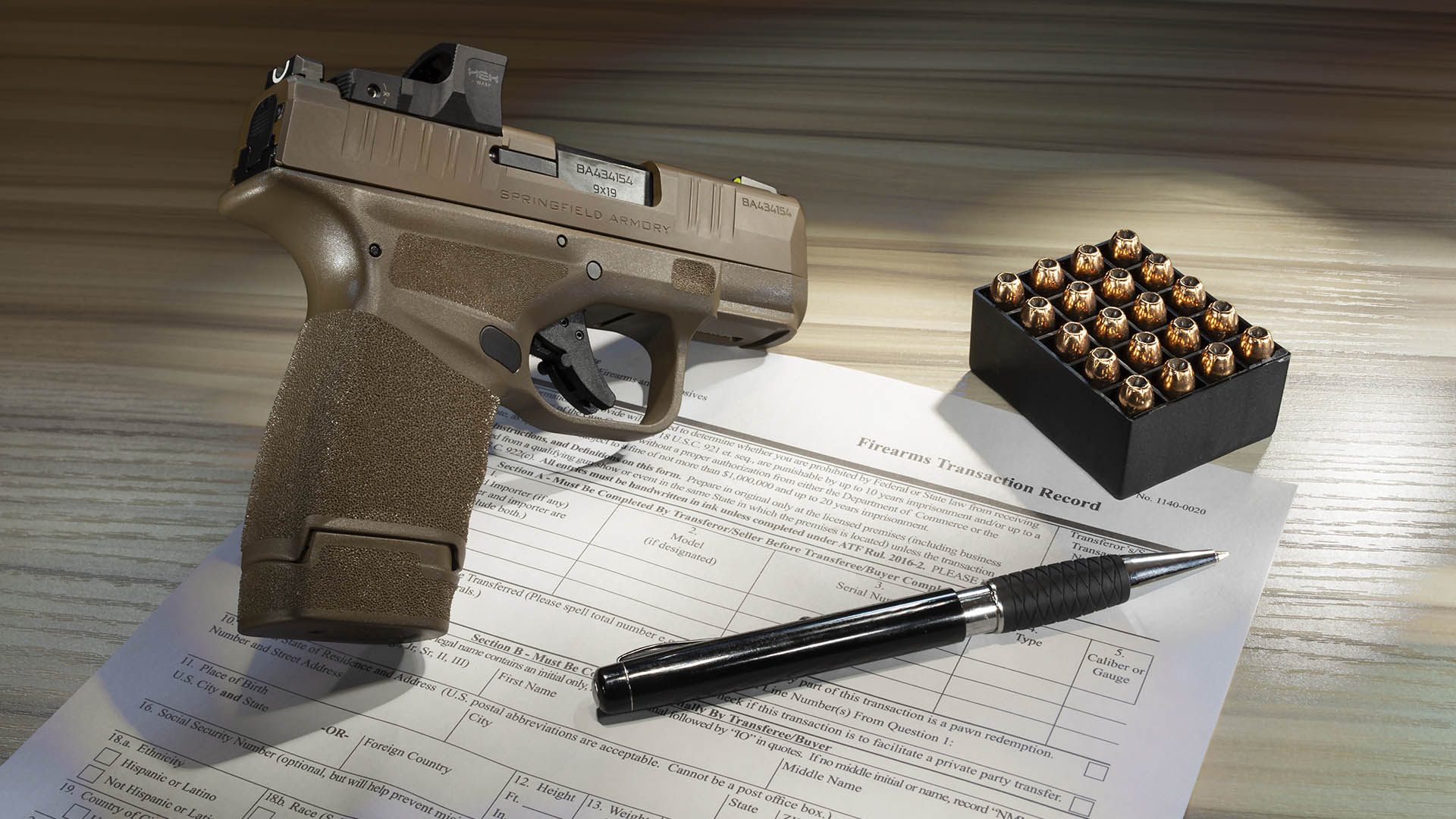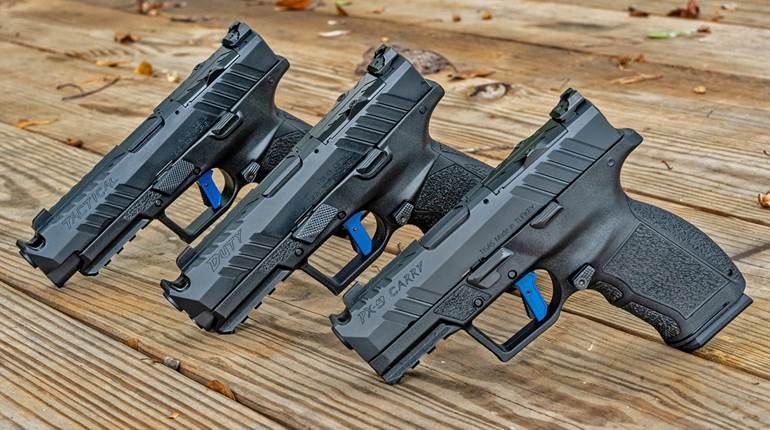
An early morning call to Barrett Firearms one day was routed to customer service manager Don Cook. The tone was urgent. A Marine was calling from a battlefield to explain his Barrett .50-cal. M107 sniper rifle had stopped functioning and the trigger would not release the firing pin. Don, a former Marine Master Gunnery Sergeant (MSSG), immediately jumped on the task.
With the pressure on, Don reverted to his Marine Corps training to come up with a solution. Ignoring the sound of the gunfire on the other end of the line, he visualized an enlarged view of all the gun’s components to better relate their interaction in relation the Marine’s description of the problem. This led him to conclude the “ears” on the lower receiver were bent out of shape, causing the problem.
Yet one other issue was present. How should the Marine bend them back with no tools in the middle of combat? Don estimated that the M107’s massive bolt carrier might work as a tool and explained how to position it to bend the ears back correctly. The Marine passed the phone to someone else, and after a brief pause, Don heard the familiar “boom” of the M107. The other Marine’s voice said: “That worked! Thanks, out here.”
Don’s story became national news. He was even interviewed on the National Geographic and History channels. I personally found the account interesting but not surprising. You see, I’ve known Don Cook for some of his 18 years in the USMC and all of his 26 years at Barrett. During that time, I’ve come to know firsthand his capabilities and work ethic.
Immediately after the call, Don sought out company owner, Ronnie Barrett, to find a fix for the issue, and a simple modification was developed for new production guns and refurbishments. But Gunny Cook isn’t the only Gunnery Sergeant to have made an impact in the firearm industry. In the 1960s, when I started my career at the General Electric Armament Systems Department, I learned that we sent MSSG George McGarry to Vietnam as a technical liaison to support our 7.62x51 mm NATO six-barrel Gatling machine guns or “Miniguns.”
While first used as helicopter door guns, GE developed a 6,000 r.p.m. gun pod for fixed-wing aircraft and helicopters. McGarry’s task was to meet the first shipment and supervise the installation on aircraft. When the “Minipods” arrived, George found that all had been damaged in shipping. Some had made the trip upside down and their batteries leaked acid onto the metal components below.
To get them operational, George cannibalized parts from the worst of them to get some functioning right away. This afforded him time to repair or fabricate parts for the remainder, and in a short time, all were repaired to the detriment of the Vietcong. Gunny George McGarry came to GE with outstanding credentials. While on active duty, he was assigned to work under Col. George M. Chinn.
After World War II, the Ordnance Bureau funded Col. Chinn to research every machine gun ever built and write comprehensive texts describing function and analysis, along with explanations and illustrations of the operation of each system. McGarry’s job was to disassemble each gun, describe its action, categorize it and work with illustrators to provide accurate depictions.
Today, Chinn’s five-volume series, “The Machine Gun,” is recognized as the world’s most authoritative reference on machine guns. McGarry assisted Chinn on Volumes III, IV and V. So who helped Chinn with Volumes I and II? It was Gunny John H. Moore, who had a vast knowledge of foreign automatic firearms. There is an unflattering observation made about Marines which goes something like, “If you want to know if something can be broken, give it to a Marine.”
While this may seem a particularly unkind characterization of these brave warfighters, it holds a modicum of truth. Marines understand combat situations and the rough handling their equipment must withstand. Many have developed a knack for finding design weaknesses. More than one company I know of has a Marine “play” with a new prototype to see if it can be jammed or easily broken. Combat is an inopportune time to learn a deficient product has been fielded.
When I joined Heckler & Koch USA, I became reacquainted with former MSSG Tom Kivlehan who worked in customer support. The Army and Marines were deployed to Iraq and having difficulties with their magazines for the M4 carbines. The issue magazine had an aluminum body that was not withstanding combat conditions in the rocky terrain. H&K had designed a rugged steel body magazine which had demonstrated high reliability and durability in our testing.
Before we shipped them, we sent Tom Kivlehan to a Marine Corps base to make sure they were functioning well in the field. Tom called to say the magazines were having problems, and he’d return the next morning to explain. A large group of salesmen and managers gathered in the shipping area, seated among the large number of huge pallets packed with new magazines.
Tom arrived with a magazine loaded with dummy rounds and without a word, he walked over to a table and smacked the magazine against the table leg. The blow dislodged the bottom plate, whereupon 30 rounds and a spring came squirting out of the bottom as we looked on in horror. The happy tinkling sounds made by the rounds as they bounced on the concrete floor were in stark contrast to Tom’s single word: “Unacceptable.”
Luckily, the fix was easy and was quickly incorporated to avoid a delay in shipping. With more than 20 years of service in the Marine Corps, Gunny Kivlehan’s knowledge of weapon deployment was invaluable to the development H&K’s new products. He was a major contributor to the design of the HK416, which was the basis for the USMC’s M27 Infantry Automatic Rifle.
In 2010, Tom left H&K to open Fortress Firearms Manufacturing, a company that develops improved firearms and offers gunsmithing services. Tom hires veterans, in particular disabled veterans, to meet his need for competent and disciplined workers. Why are USMC Gunnery Sergeants so highly qualified to work in the firearms industry, and why have they made such a major impact?
I enlisted the help of Nick Wasley, a machinist at Ohio Ordnance Works to provide answers. Nick was in the USMC for 14 years and medically retired just before becoming an E-7 Gunnery Sergeant. After schooling at Aberdeen Proving Grounds, Nick graduated at the top of his class, receiving accreditation as a 2111 small arms repairman and later attended more intense training at PWS in Quantico, Va., to become a 2112 precision weapons technician.
This position requires demonstrated competency and experience with mechanical and machinist skills. Gunny’s get plenty of hands-on experience with many different types of firearms. After four deployments, including Fallujah and Iraq, Nick worked on every type of firearm and even artillery pieces. When one repair section was overloaded, another would pitch in to help.
After he’d fixed all the guns and returned them back to the units, Nick found the handshakes and pats on the back hugely rewarding. Nick told me his mentor, Gunny Hudson was his greatest inspiration and instilled in him what must be his most important objective, “Take care of your shooters.” Nick said “Every time an operator pulls the trigger, they have to have the utmost confidence the gun will work.” Nick has made this his lifetime goal.
After leaving the Marine Corps in 2018, Nick found his dream job at Defiance Machine building custom rifles. Yet after enduring the night shift and time away from his family, he took a job with Ohio Ordnance Works. Drawing on his experience using manual machines, he now builds prototype parts for the company’s new designs.
With Ohio Ordnance’s blessing, Nick also operates his own gunsmith shop, Valor Precision. There he builds the .45-cal. MEUSOC pistol, originally designed for Special Ops and the USMC. There are different generations of configurations, and many of the old time gunsmiths have moved on, leaving Nick as one of the few with the knowledge to recreate them.
At any one time, the Marine Corps deploys more than 8,000 Marine Corp Gunnery Sergeants. After service, they often find jobs in the firearms industry where their experience and dedication to the job is welcomed. Through the years, I’ve been honored to work with many of them which lead to one conclusion. Whether the chips are flying or the chips are down, I have but one request: “Get me a Gunnery Sergeant.”












